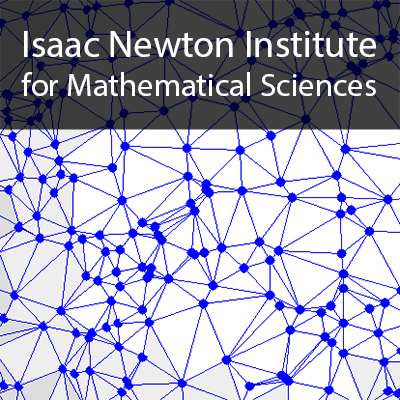Detecting Epistatic Selection in the Genome of RILs via a latent Gaussian Copula Graphical Model
19 mins 28 secs,
68.92 MB,
WebM
640x360,
29.97 fps,
44100 Hz,
483.35 kbits/sec
Share this media item:
Embed this media item:
Embed this media item:
About this item

| Description: |
Behrouzi, P (University of Groningen)
Thursday 25th August 2016 - 10:40 to 11:00 |
|---|
| Created: | 2016-08-31 16:30 |
|---|---|
| Collection: | Theoretical Foundations for Statistical Network Analysis |
| Publisher: | Isaac Newton Institute |
| Copyright: | Behrouzi, P |
| Language: | eng (English) |
| Distribution: |
World
|
| Explicit content: | No |
| Aspect Ratio: | 16:9 |
| Screencast: | No |
| Bumper: | UCS Default |
| Trailer: | UCS Default |
| Abstract: | Recombinant Inbred Lines (RILs) derived from divergent parental lines can display extensive segregation distortion and long-range linkage disequilibrium (LD) between distant loci on same or different chromosomes. These genomic signatures are consistent with epistatic selection having acted on entire networks of interacting parental alleles during inbreeding. The reconstruction of these interaction networks from observations of pair-wise marker-marker correlations or pair-wise genotype frequency distortions is challenging as multiple testing approaches are under-powered and true long-range LD is difficult to distinguish from drift, particularly in small RIL panels. Here we develop an efficient method for reconstructing an underlying network of genomic signatures of high-dimensional epistatic selection from multi-locus genotype data. The network captures the conditionally dependent short- and long-range LD structure of RIL genomes and thus reveals "aberrant" marker-marker associations that are due to epistatic selection rather than gametic linkage. The network estimation relies on penalized Gaussian copula graphical models, which accounts for large number of markers p and small number of individuals n. A multi-core implementation of our algorithm makes it feasible to estimate the graph in high-dimensions (max markers ~ 3000). We demonstrate the efficiency of the proposed method on simulated datasets as well as on genotyping data in A.thaliana and Maize. |
|---|---|
Available Formats
| Format | Quality | Bitrate | Size | |||
|---|---|---|---|---|---|---|
| MPEG-4 Video | 640x360 | 1.94 Mbits/sec | 283.08 MB | View | Download | |
| WebM * | 640x360 | 483.35 kbits/sec | 68.92 MB | View | Download | |
| iPod Video | 480x270 | 521.92 kbits/sec | 74.35 MB | View | Download | |
| MP3 | 44100 Hz | 249.83 kbits/sec | 35.62 MB | Listen | Download | |
| Auto | (Allows browser to choose a format it supports) | |||||

